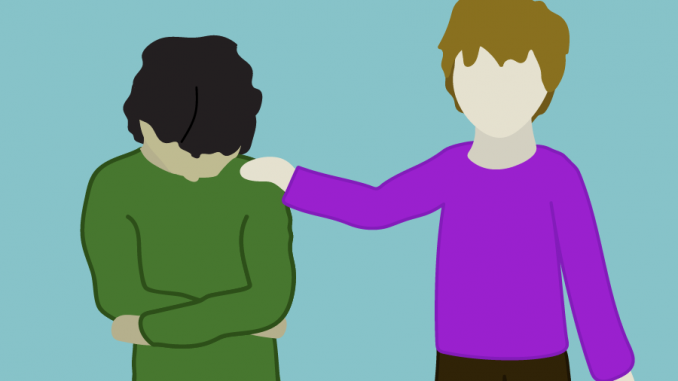
When I scroll through Instagram, I often see aesthetically pleasing graphics spread across stories and posts, all with a similar message to “check on your friends.”
Checking in on your friends is important and should be encouraged, but in terms of suicide prevention, it is not enough.
Suicide prevention can be defined as knowing the warning signs of suicide and getting help to save lives.
We need to shift the attention from the individual and place pressure on institutions to increase access to mental health care, livable wages and homelessness prevention. It cannot be reduced to placing personal responsibility on individuals while disregarding our government and its lack of effort in improving our health care system.
Frank Farley, a psychology professor and former president of the American Psychological Association, said that a lack of universal health care and poor mental health are interrelated.
“The health care system has significant problems,” Farley said. “Homelessness is often connected with mental health issues. Empathy is key, and redefining the system is important, but we should not lose sight of the person.”
One problem is many people don’t know where to begin with seeking help, said Mark Salzer, a public health professor and director of the Temple University Collaborative on Community Inclusion of Individuals with Psychiatric Disabilities.
“There’s been recent work that asks people where they would go for help, and folks had no idea where to start and would hear about waiting lists and it’s really a reason why people end up going to emergency rooms because they don’t know where else to go,” Salzer added.
In addition to a lack of reliable information, a cost-barrier prevents people in the U.S. from having equitable, affordable access to health care, as 42 percent of Americans report cost and insurance as an obstacle to accessing mental health care, according to a 2018 report by the National Council for Behavioral Health.
Nearly a quarter of adults with mental illnesses reported that they were unable to receive the treatment they needed, according to a study by Mental Health America from this year.
Economic disparities related to homelessness and unemployment are linked to higher suicide rates. Suicide rates for individuals experiencing homelessness are estimated to be nine times that of the general U.S. population, according to a 2018 report by Harvard Public Health Review.
Among those experiencing homelessness, the LGBTQ community and ethnic minority groups are at an elevated risk.
Although these factors are not always contributing causes of suicide, they are institutional at their core. Putting our efforts towards mending these systems is a critical step in enacting real suicide prevention.
Michelle Chan, a junior marketing major and vice president of the internal team at Active Minds TU, said accessible resources are critical to helping those who need it.
“Any resource can help someone feel like they’re not going through something alone,” Chan said. “The more resources available, the better care and help someone can get because they can choose what fits for them. More accessible mental health care will save lives.”
Placing the weight of suicide prevention on an individual’s shoulders can be a harmful sentiment. It is important to check on our loved ones, but we must recognize the failures of our for-profit health care system.
As September and Suicide Prevention Month comes to an end, we must continue having these discussions year round.
“If we’re not going to talk about stress and trauma in America now, then when are we going to talk about it?” Farley said.



Be the first to comment